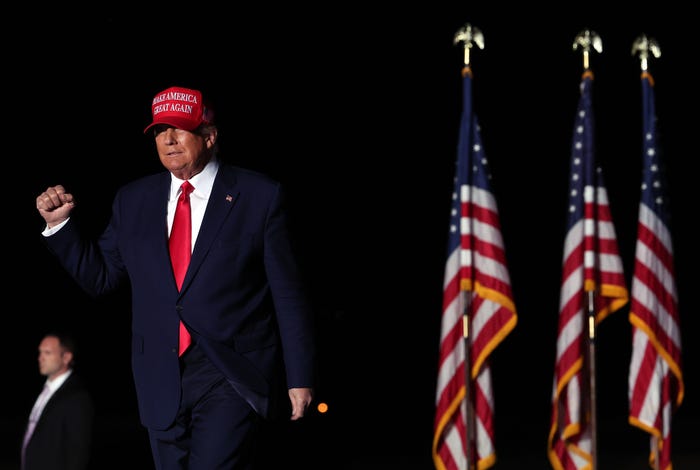Welcome to the “Morning Glory” column. In these bi-weekly posts, I’ll delve into the key topics shaping the 2024 election, topics that will also be discussed on my morning radio show airing live from 6 to 9 AM Eastern on 475 platforms. If you miss the live broadcast, a podcast version will be available later in the day.
Should former President Trump secure the GOP nomination swiftly, transitioning into the general campaign is crucial. To maintain a consistent presence in the news cycle and set the tone for the next ten months, Trump must generate headlines beyond those emerging from legal proceedings.
A strategic and impactful move for Trump would be to revisit and expand upon the successful innovation of his 2016 campaign: the list. During that election, Trump unveiled a list of potential Supreme Court nominees, addressing the vacancy left by Justice Scalia’s passing. This not only emphasized a critical issue for base voters but also reassured conservatives of Trump’s commitment to appointing originalist justices. The approach proved effective.
Should Trump promptly disclose his VP pick, benefiting fundraising and messaging, and then express an intention to unveil additional potential appointees regularly, he would emphasize that voters are choosing not just a president but also 3,000 political appointees. Each release of appointee lists, such as a Secretary of Defense list featuring figures like Cotton, Pompeo, and Congressman Michael Waltz, could coincide with a critique of the Biden Administration’s appointments and their shortcomings.
Offering detailed previews of his second-term personnel choices would not only attract new supporters but also consistently redirect public and media attention to the failures of the Biden era.
By conveying the gravity of the times through the caliber of his potential cabinet and senior staff, Trump could leave Democrats decrying a “threat to democracy” as he outlines his agenda and introduces the individuals likely to execute it.
BOSSIE: Anticipating a 2024 Trump-Biden rematch that promises to be unlike any previous election.
In forthcoming “Morning Glory” installments, I’ll delve into why Trump should initiate the vetting process for six potential VP candidates: Arkansas Senator Tom Cotton, Iowa Senator Joni Ernst, Wisconsin Congressman Mike Gallagher, former Secretary of State Mike Pompeo, former National Security Advisor Ambassador Robert O’Brien, or Alaska Senator Dan Sullivan. The rationale behind this selection is evident – all are significant voices in national security, veterans, and some offer strategic electoral advantages, like Gallagher in Wisconsin or O’Brien, a member of the Church of Jesus Christ of Latter-day Saints, in crucial states like Arizona and Nevada where the LDS vote holds sway.
However, the person Trump ultimately selects for the bottom of the GOP’s 2024 ticket serves as more than just a vote, message, or fundraising multiplier. If Trump unveils a roster of potential Cabinet appointees, each individual on that list contributes to garnering support. While there’s an age-old argument suggesting that publicly naming potential appointees may run afoul of prohibitions against pledging offices in exchange for support, the multiplier effect on voters cannot be overlooked.
Opponents of conducting a direct comparison between Team Biden and a potential Team Trump often reference 18 United States Code §599, which prohibits candidates from making promises or pledges regarding appointments to secure support. This provision does not hinder Trump, as he wouldn’t be seeking support from the mentioned individuals. It serves as no obstacle to publicly disclosing those whom Trump plans to enlist in addressing the challenges stemming from the Biden era.











